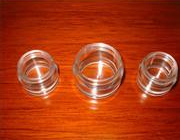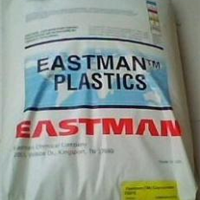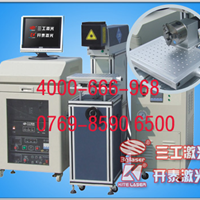
PCTA
PCTA copolymer is a polymer formed by cyclohexanedimethanol and terephthalic acid, as well as partially replacing terephthalic acid with other acids as required. Compared with PET, it has lower extractability, better heat resistance, low temperature impact resistance and hydrolysis stability. It can be used in the fields of orientation and tape casting film, hot forming plate and monofilament, etc. Normal PCTA co polyester extruded film features: extremely bright transparency, good low-temperature toughness, high tear resistance and chemical resistance. Changing the acid ratio in the synthesis of PCTA copolyester can make the polymer have different unique properties. For example, it can have a high crystallization melting temperature (545F) for making baking dishes. PCTA can also be blended with other polyester or filled with glass fiber and mica to meet various performance requirements. PCTA copolyester products can be used for various purposes in contact with food, which has been stipulated in the FDA specification 21CFR-177-12401, and has also been approved by USDA as packaging materials for meat and poultry. The raw material supplier is mainly Eastman. PCTA is a kind of copolyester plastic raw material. It has high transparency, good toughness and impact strength, excellent low-temperature toughness, high tear resistance and good processing performance, excellent chemical resistance, can be plated, sprayed, scratch resistant, 16% lower density than PC, 40% lower processing cost than PC, good printing, coloring, electroplating performance, toughness 3 times higher than transparent ABS, in line with the European RoHS environmental protection directive).
2. Common applications of PCTA
It is suitable for high-grade cosmetics, electronic and electrical materials, toys, high-grade pens, and can replace PC in various fields. It can be processed by traditional extrusion, injection molding, blow molding and blister molding methods. Widely used in plate and sheet, high-performance shrink film, bottle and profile markets; It can be used to produce toys, household utensils and medical supplies.
3. Development history of PCTA
From the current market situation, many people may have never been exposed to PETA. In fact, the real start of PETA is from the transparent plastic packaging materials for high-end cosmetics. Previously, the transparent plastic packaging materials for high-end cosmetics usually used acrylic. Although the transparency of acrylic is excellent, However, its solvent resistance is poor (acrylic is easy to whiten due to contact with cosmetic contents, which requires frequent addition of liners), and acrylic is not resistant to impact. However, The emergence of PETA/PCTA can just make up for this defect of acrylic, because PETG/pctg has many advantages: the most extensive chemical resistance, high transparency, high toughness, self-adhesive, good printability (its products do not need corona treatment), high impact resistance, good weather resistance, chemical resistance and corrosion resistance, good gas barrier, environmental protection and non-toxic, good processing and forming, good ductility With the characteristics of internal stress resistance, they have gradually become the first choice of transparent plastic packaging materials (such as containers and cream bottles for high-end cosmetics) for the world's major brand cosmetics manufacturers. Especially in terms of chemical resistance, PETA/PCTA has more extensive chemical resistance than acrylic. PETG/PCTG can be said to be one of the transparent plastics with the most extensive chemical resistance, so that in many cosmetic packaging occasions, PETG containers no longer need to add liners, and can directly contact the contents of cosmetics. In contrast, transparent containers made of acrylic, AS, PS, PC, NAS and other materials usually need to add liners, and when these materials are often exposed to the above chemicals, their fatigue strength will become worse, which is more likely to lead to stress whitening or stress cracking of transparent containers, and sometimes even lead to unnecessary claims from customers. In addition, adding liners also requires a lot of work, It indirectly increases a lot of costs, so if you want to calculate the overall comprehensive cost, PETA/PCTA transparent containers without liners will undoubtedly be more cost-effective than plastic containers such as acrylic containers with liners. In addition, if you do not add liners, the original color of cosmetics content will be well displayed to customers, which can better enhance the competitiveness of cosmetics in the market.




